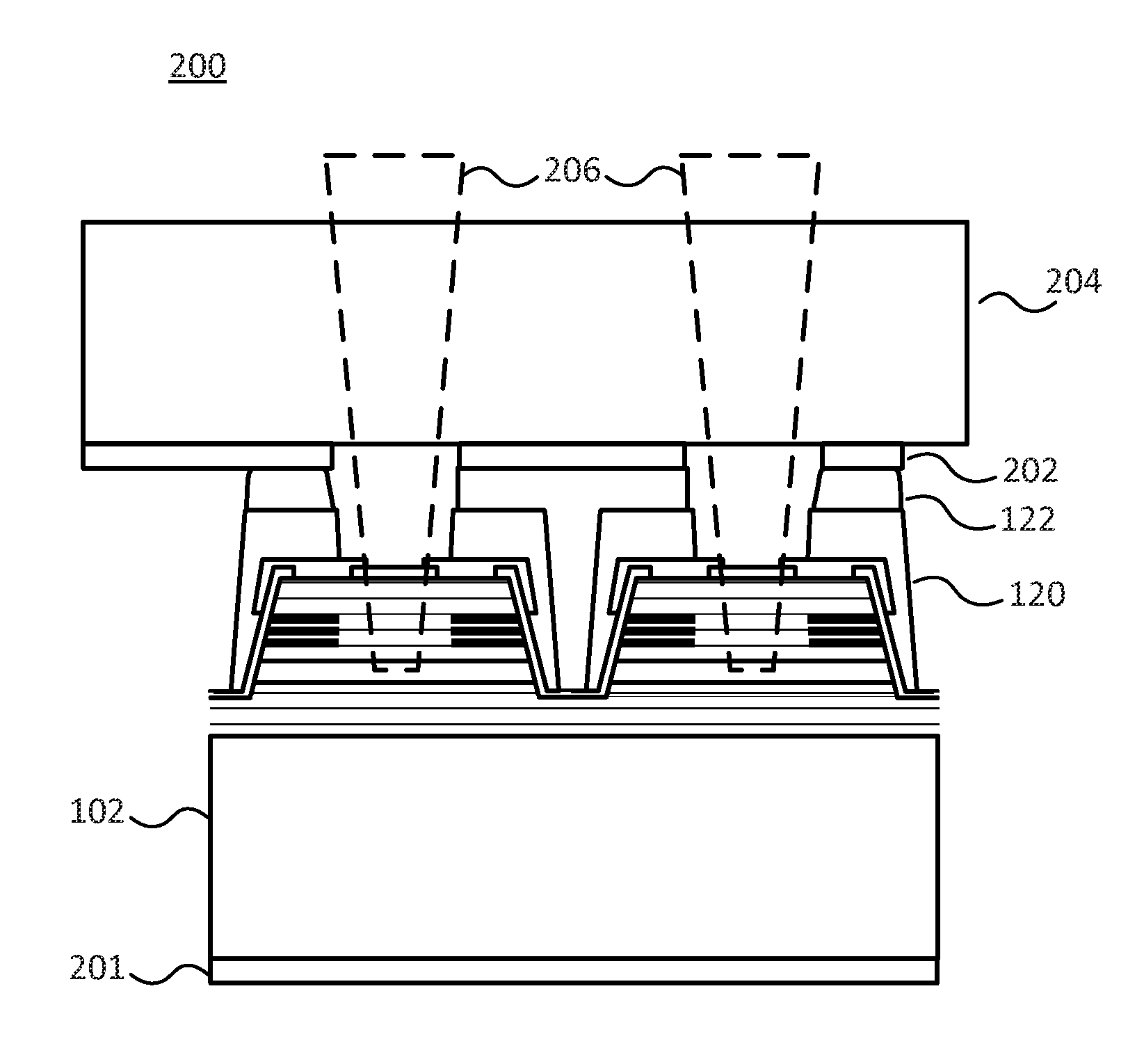Multibeam array of top emitting vcsel elements
a technology of vcsel elements and beam arrays, which is applied in the direction of lasers, semiconductor lasers, laser construction details, etc., can solve the problems of severe limitation of operational characteristics, extreme detrimental effects of combined heating effects on the properties and lifetime of photonic devices, and severe impairing of operational characteristics, so as to improve the illumination properties and capabilities of arrays
- Summary
- Abstract
- Description
- Claims
- Application Information
AI Technical Summary
Benefits of technology
Problems solved by technology
Method used
Image
Examples
Embodiment Construction
[0027]An embodiment is directed to a multibeam optoelectronic device, referred to as a VCSEL array device, which may have high power and may be thermally managed to improve performance from top emitting VCSEL arrays. The VCSEL array device may be a monolithic array of VCSELs comprised of two or more VCSELs and a thermal heat sink substrate positioned on the top of the devices but leaving windows or gaps over the aperture areas for light emission. Top emitting VCSEL arrays have much more difficulty removing heat from the multiple VCSEL devices than back emitting VCSEL arrays. If the heat is not removed from each device and transferred away quickly, the device's operational characteristics can degrade and the performance and reliability of the VCSEL devices will suffer. A dense array will lend itself to even more heat buildup reducing performance of the devices or burning up the devices like a fuse.
[0028]An embodiment may position the heat sinking apparatus at the most beneficial area...
PUM
 Login to View More
Login to View More Abstract
Description
Claims
Application Information
 Login to View More
Login to View More - R&D
- Intellectual Property
- Life Sciences
- Materials
- Tech Scout
- Unparalleled Data Quality
- Higher Quality Content
- 60% Fewer Hallucinations
Browse by: Latest US Patents, China's latest patents, Technical Efficacy Thesaurus, Application Domain, Technology Topic, Popular Technical Reports.
© 2025 PatSnap. All rights reserved.Legal|Privacy policy|Modern Slavery Act Transparency Statement|Sitemap|About US| Contact US: help@patsnap.com



